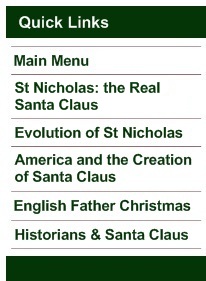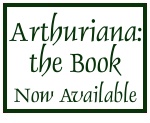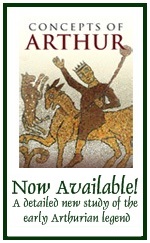
 |
 |
A Guide to the Evolution of St Nicholas and his Cult Introduction Over the course of the medieval period the legend of St Nicholas continued to develop and spread enormously, especially after the theft of his relics and their translation to Bari in southern Italy in 1087. Indeed, the cult of St Nicholas eventually rivalled that of the Virgin Mary in many regions, to judge from church dedications. In addition to becoming the patron of sailors as part of this process, St Nicholas also became known as the patron of children. This important development was a consequence of the popular tale of his rescue from death of three children, who had been pickled for eating by an innkeeper. When combined with his reputation as a gift-giver, all the key elements were in place for the transformation of St Nicholas into the modern giver-of-gifts to children. The most significant manifestation of this, from the perspective of Santa Claus, is the Dutch Sinterklaas. Whilst Sinterklaas clearly derives from St Nicholas and his feast-day of the 6 December, he differs from the earlier portraits of St Nicholas in a number of ways, not least in his flying white horse. These differences are often explained as a result of the legends of St Nicholas being fused in the medieval period with those of the former pagan god Wodan (the Norse Odin, who possessed a flying horse named Sleipnir), although this is open to debate and one might well wonder whether all of the aspects of the legend of Sinterklaas that are sometimes claimed to derive from such a fusion really do so. Whatever the case may be, in the Early Modern era there were several unsuccessful attempts to stamp out the Sinterklaas tradition for religious reasons; more recently it has been attacked as a 'racialized tradition', due to Sinterklaas' companion Black Pete, but it remains nonetheless popular in Holland. Guide to Online Resources: Evolution and Influences Saint
Nicholas, Sinterklaas, Santa Claus - A good,
detailed online study for the general reader on the evolution of St Nicholas of Myra
in the
medieval and early modern eras, including discussion of the impact of
the translation of St Nicholas's remains to Bari (Italy), the
potential addition
to his cult of elements borrowed from Germanic myths of
Wodan/Odin, and his post-medieval existence as the Dutch Sinterklaas.
Also providing excellent coverage of the growth of the cult of St
Nicholas is Graham Jones's St
Nicholas, Icon of Mercantile Virtues: Transition and Continuity of a
European Myth (available on limited preview via Google
Books).
The Origin of American Christmas Myth and Custom by B.K. Swartz, Jr. is a nice, schematic version of the evolution of St Nicholas, which argues that pagan elements - especially aspects of the god Wodan/Odin - were combined with Christian legend to create the Dutch Sinterklaas (this page is now hosted on this website by kind permission of Professor Swartz). These developments are also very briefly mentioned in Santa Claus Does More Than Deliver Toys: Advertising's Commercialization of the Collective Memory of Americans, an online journal article (p. 216 of the PDF). The medieval and early modern evolution of St Nicholas is, in addition, discussed at some length in Bruce Forbes's Christmas: a Candid History, pp. 73-9 (available as a limited preview via Google Books). The St Nicholas Centre website has several worthwhile pages on the evolution of St Nicholas, in particular on St Nicholas in Bari; on St Nicholas as Gift-Giver; and on St Nicholas as a Patron Saint. With regard to the first of these developments of St Nicholas's cult, there are two important sources available online: an eleventh-century account of The Translation of St Nicholas to Bari in 1087 and a thirteenth-century account of The Translation of St Nicholas. There is also a good discussion of Bari and the Norman interest in St Nicholas available in Dawn Hayes' The Cult of St. Nicholas of Myra in Norman Bari, c. 1071-c. 1111.
A Kinder, Gentler St Nicholas - A fascinating article on the survival and reintroduction of continental St Nicholas traditions in American. It also includes some material on the association of the cult of St Nicholas with 'boy bishop' traditions. For more on this, see Boy Bishops or Nicholas Youth Bishops. A good discussion of St Nicholas's Day and Boy Bishops in medieval England is also available in Clifford Davidson's Festivals and Plays in Medieval England (Google Books limited preview) and I have discussed some further evidence for this tradition in a blogpost entitled St Nicholas or 'Boy Bishop' tokens in fifteenth- and sixteenth-century East Anglia.
Finally, Roger Highfield’s fascinating book Can Reindeer Fly? The Science of Christmas is useful, especially the online sample chapters Who Was Santa? and The Hallucinogenic Connection, the latter suggesting a connection between late developments of St Nicholas and the hallucinogenic mushroom Fly Agric. See also Fly Agric and Christmas; New Light on Old Christmas Traditions; and The Influence of Fly Agric on the Iconography of Father Christmas on this. Guide to Online Resources: St Nicholas & Christmas Figures Around the World World Traditions: By far the most comprehensive coverage of current St Nicholas devotion is St Nicholas Around the World from StNicholasCentre.org. See also Will the Real Santa Claus Please Stand Up? and International Santas, which is commercial but goes into some detail on the individual santas, although some of its interpretations are dubious. For a good selection of links relating to Christmas traditions in general, see Christmas Traditions Around the World. English Traditions:St Nicholas in England has some details about the revived St Nicholas-linked 'boy bishop' traditions in England, whilst the latter link covers their medieval manifestations. See also St Nicholas in Old England. J. Simpson and S. Roud, The Oxford Dictionary of English Folklore, p. 309, note that St Nicholas did not disappear from England with the Reformation. He was still associated with children in England in the late seventeenth century, so that in the 1680s Aubrey could remark that 'School-boies in the west still religiously observe St Nicholas Day (Decemb. 6th) he was the Patron of the School-boies…', although the custom eventually died out in England, unlike on the continent. For the modern English Christmas figure, see the dedicated page on the English Father Christmas (who seems to be a separate character from St Nicholas). Dutch Traditions:
German Traditions: As with the Dutch traditions, there is a clear derivation from the cult of St Nicholas but with hints of other influences: St Nicholas in Germany, a nice little guide to German customs and their evolution; The Legend of Sankt Nikolaus; St Nicholas in Germany. A detailed account is also available in The Many German St Nicks - the third page of this points out that Thomas Nast hailed from Germany and that his version of Santa Claus was partly inspired by German variants. See also A Kinder, Gentler St Nicholas, referred to previously, and this List of German St Nicholas Names. Swedish & Finnish
Traditions:
The Swedish 'Santa': Jultomte - some very interesting details on Swedish Christmas customs from Wikipedia, especially the fact that Christmas presents are delivered by an elf (tomte) riding Julbock, the Swedish Christmas goat (see also Holy Heathen Gavle Goat!). In Finland there is the Joulupukki: Wikipedia - Joulupukki and The Finnish Joulupukki. *
* * * *
Copyright © 2004, 2015 Caitlin R.
Green.
All Rights Reserved. To cite articles or pages from this website, use a
service such as WebCite
or alternatively see one of the following style
citation guides. Comments and queries via email to Caitlin R. Green
|
  |